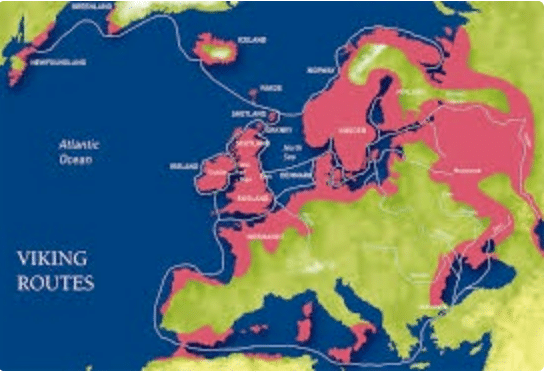The Inheritance of the Americas
“As Columbus and his successors became familiar with the agriculture of America, they found that the only crops common to both the Old and New Worlds were cotton, coconuts and some gourds. The crops hitherto unknown outside America included maize, cassava, potatoes, sweet potatoes (which may or may not have reached some of the Pacific islands by this date), groundnuts, French beans, tobacco, cocoa, pineapples and tomatoes. The dog was the only domestic animal common to both hemispheres; otherwise the Americans had only partially domesticated the llama, the guinea-pig, and the turkey.
Thus, at one stroke the potential vegetable resources of the known world had been doubled. The dispersal of crops and livestock which followed was the most important in human history, and perhaps had the most far-reaching effects of any result of the Discoveries.” (Masefield 1967, p.275-6)
Precious stones and minerals:
- Prata/Silver mainly in Peru after 1545-6 and in Mexico after 1546-8
- Ouro/Gold after 1442 in Rio do Ouro (West Africa), and through the outposts/factories (feitorias) in Arguim (1445) and S. Jorge da Mina (1481) and in Munhumutapa (Monomotapa) through Sofala (1515), Quiloa, and Mozambique (East Africa).
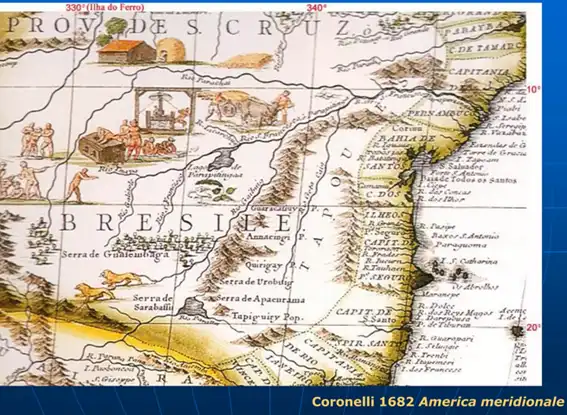
The Portuguese looked for gold in Brazil at least since the expedition of Martim Afonso de Sousa, 1531, but only struck lucky 1674-81 with the “bandeira” of Fernão Dias Pais de Leme, and some years later in Ouro Preto (Black Gold), previously known as Vila Rica (Rich Town), in the area, now state, of Minas Gerais (General Mines).
After spices from the East-Indies, silver and gold, were behind what many consider, like Nuno Palma[1], one ‘Maldição dos Recursos’ (resource curse or paradox of plenty), responsible for “the phenomenon of countries with an abundance of natural resources (such as fossil fuels and certain minerals) having less economic growth, less democracy, or worse development outcomes than countries with fewer natural resources”.[2]
[1] Nuno Palma “As causas do atraso português. Repensar o passado para reinventar o presente”, Publicações Dom Quixote, Alfragide, 2023, p.22

This 18th century construction under king John the 5th is perhaps the best example of misused resources, namely the gold from Brazil.
- Diamantes/Diamonds first acknowledged to the crown in 1729, and apparently already happened in 1723-4. One town in Brazil got the name of Diamantina.
- Esmeraldas/Emeralds
- Topázios imperiais/Topaz
Vegetables/Plants and animals:[1]
- Ananas (Nana in Tupi) (Abacaxi, A large, sweet pineapple grown especially in Brazil) (Pineapple) (Ananas sativus Lindl/Schult) probably first found by Columbus on the island of Guadalupe, existed also in Brazil, from where they were taken to India by the Portuguese. (Braga 2007, p.117) The pineapple originated on the American continent in part of Central and South America. Spaniards and Portuguese distributed it throughout the tropics, Santa Helena island (1505), Madagascar (1549), and India (1518). (Ferrão 2005, p.75)
[1] For a thorough review of plant translocation between continents in which the Portuguese have been instrumental, if not pioneers, in the context of their discoveries, you may read both main works of José E. Mendes Ferrão (“A aventura das plantas e os descobrimentos portugueses”, 2005 (3rd edition), with short abstracts in English, and its sort of abridged version “Plantas nos descobrimentos portugueses nos séculos XV e XVI”, Universidade Católica Editora, Lisboa, 2015), who in this later one states that “in world terms, the efforts with the discoveries wouild have been worth it, if only for the influence exerted by the plants they helped spread across the continents.
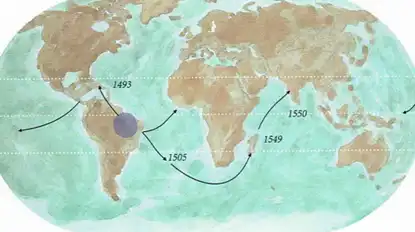
- Anatto is a plant of South American origin introduced from Brazil to India, S. Tomé and Angola. (Ferrão 2005, p.79)
- Almost all species of annona originate in America, and at least some were introduced to Brazil by the Portuguese, who subsequently carried them to Africa and the Orient. (Ferrão 2005, p.82)
- Avocado/abacate, originated in Central America, and was introduced to Southern Spain in 1601, Jamaica in 1650, Mauritius 1780, and Florida not before 1833. (Ferrão 2005, p.63)
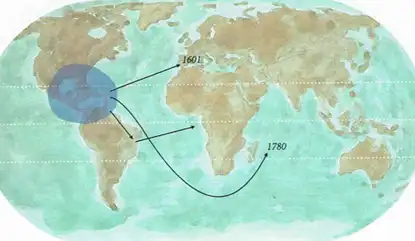
- Maracujá (Passiflora tuberosum or edulis) (from tupi mara kuya) (Passion fruit), most of whose species originated in tropical America. (Ferrão 2005, p.136)
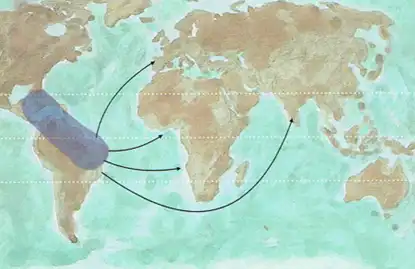
- Cassava/mandioca “originated in South America, where it has been known since ancient times by the Guarani Indians. … It was brought to Angola by the Portuguese, where it was cultivated for the first time at the end of sixteenth century. Other authors mention its introduction to Africa via Congo Basin in 1558. … Cassava is one of the world’s most important food plants. It is called the bread of the tropics ” (Ferrão 2005, p.134)
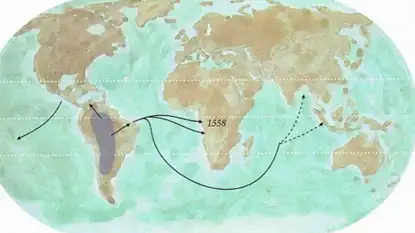
- Cocoa, Cacao (Theobroma cacao) and Chocolate Originally from Central America and/or Brazil, cacao was first cultivated by the Mayas. (Braga 2007, p.133) The first cargo with cacao arrived in Seville 1585, giving origin to a widespread appreciation and consumption of chocolate in the 17th century. (Braga 2007, p.143) Later, cacao from Maranhão, Brazil, also found its way to Europe. First chocolate house set up shop 1657 on King’s Head Alley, Bishopsgate Street, London.
According to Ferrão (2005, p.107), cacao cultivation would only have begun there in 1674, despite its Bazilian origins. A Jew of Portuguese origin would have brought cacao to Martinique in 1660 or 1661, and a governor would have introduced it to S. Tomé islands in 1822, and from here it would have spread to the continental African coast. “The introduction of the plant to Angola and Timor dates from the beginning of this [20th?] century.”
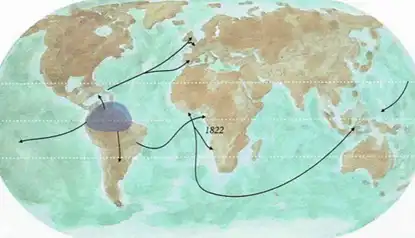
- “The Cashew originates on the tropical coasts of America, including the Antilles. Some authors give its origin as the north-east coast of Brazil. … The Portuguese introduced the cashew to the East between 1563 and 1578. …Along the Malabar coast the cashew is known as Parankimava, in local language which means ‘Portuguese mango’.” (Ferrão 2005, p.115)
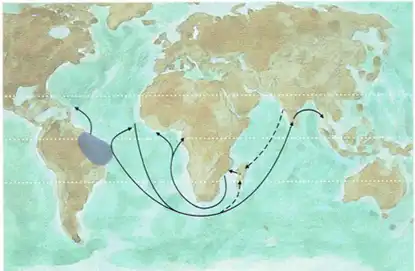
- Batata (also known as castanha da Índia) Potato Papa (Spanish) (Solanum tuberosum) Originally from the high Andes, it was introduced to Spain in1572, reached Ireland and England in about 1590. “In the case of Portugal, the first known references to potatoes are those of Vandelli, who in 1789, wrote that they were still ‘little used’, and the general spread of potato-growing in certain areas of the country occurred only very recently.” (Ferrão 2005, p.90)
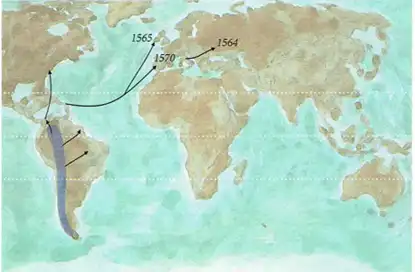
- Batata doce/Sweet potato (Ipomoea batatas) Originally also from the Andes 1538 was already grown in the Azores islands. (Braga 2007, p.93) It was brought to Europe by the Spaniards and the Portuguese, and in 1538 it was already being grown in Terceira island of the Azores, in 1552 in S. Tomé, where it had become the ‘staple food’ of the black population. The Portuguese brought it to Africa, India, Indonesia, China, Formosa and Japan. (Ferrão 2005, p.85)
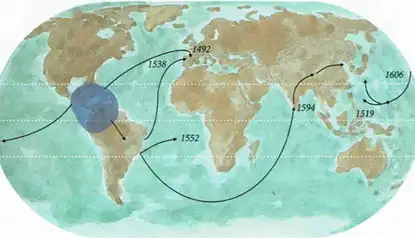
- Tomate/Tomato (Lycopersicum esculentum) or (Solanum lycopersicum) Originated in South or Central America and was staple food in Mexico, where its name comes from, before the arrival of the Spaniards. (Braga 2007, p.103) “The origins of the tomato are on the American Continent , possibly in places of high altitude, where some wild forms are still to be found….There are indications that the Spaniards brought it to Europe in 1523, and it has been known in Italy since 1544 and in England since 1597. … The tomato was probably introduced to Africa and the Orient by the Portuguese as a ‘vegetable’, possibly from Europe…”, after it arrived in Portugal and was brought to Brazil by the Portuguese.
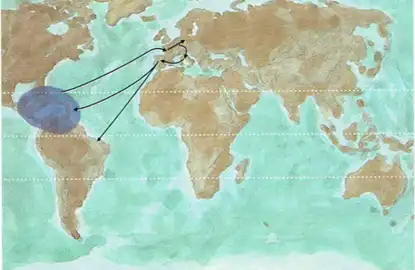
- Milho (milho americano, Pt.), Maïs (French), Maize (Indian corn, or sweet corn), Maíz (Spanish) (Zea mays) Also probably originally from the Americas. “The Spaniards found it being cultivated in Mexico … and brought it to Europe and sowed it in the area around Seville. … According to Duarte Ribeiro de Macedo, the Portuguese brought maize from Spain and cultivated it around Coimbra in the middle of the sixteenth century, but other indications suggest that it was first grown in Continental Portugal by the bishopric of Oporto, according to a manuscript by Thadim. The Portuguese must also have found maize in Brazil…All indications are that sweet corn was introduced to West Africa and then to the Orient without passing through Europe, and possibly before being grown in Portugal. … The Portuguese were responsible for spreading maize through Africa and the East, … One could say that maize, in terms of its consequences, had a greater impact on the world than the spice route, and the fabulous trade to which it gave rise.” (Ferrão 2005, p.145)
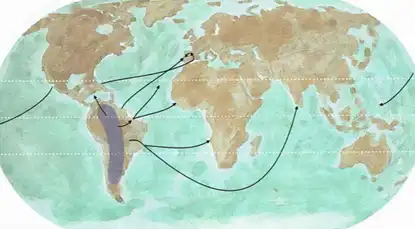
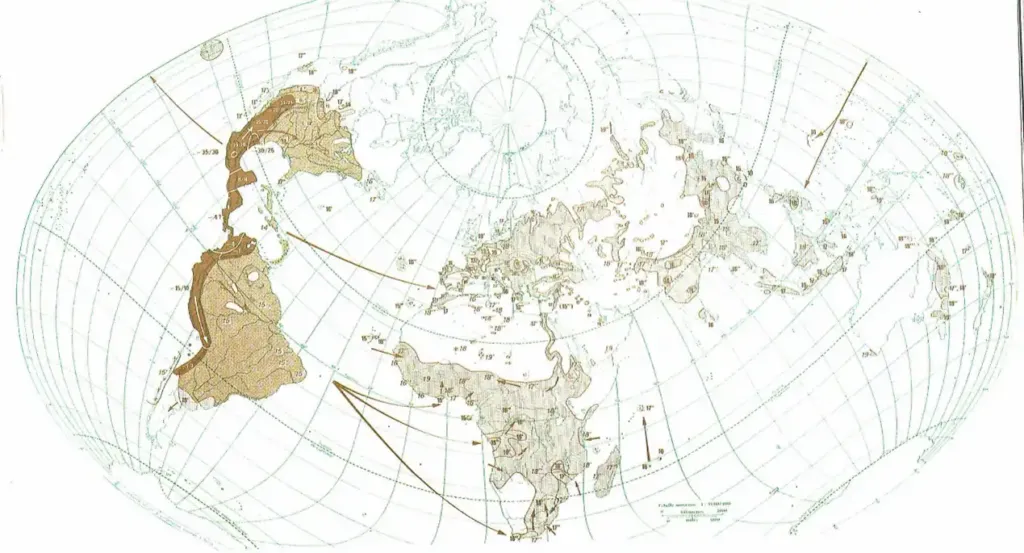
- Water maize (Victoria regia)
- The Peanut originates in South America, and the Portuguese introduced it to Africa. (Ferrão 2005, p.67)
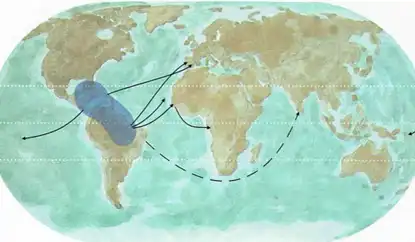
- Peru Turkey (formerly, a Guinea Fowl) (Dinde/Dindon French; poule ou coq d’Inde (occidentale) (Guajolote Mexican Spanish) (Meleagris gallopavo) The only animal used for food purposes of American origin was found in the Eastern North-America and presumably domesticated by the Aztecs. Was brought from there to Castille and from here to the rest of Europe, Portugal included. (Braga 2007, p.81)
- Tabaco/tobacco, fumo or erva-santa (Nicotiana tabacum) Columbus spoted its use as soon as he arrived in Cuba 1492. (Braga 2007, p.61) Started to be planted and grown on the Iberian Peninsula around 1558 and later in the Netherlands. (Braga 2007, p.62) Was consumed in various ways. Jean Nicot, French ambassador in Lisbon in the second half of the 16th century, contributed to its dissemination in France, and nicotine become named after him.[1] Medical virtues were attributed to tobacco. It became the second most important export good from Brazil after sugar and represented 3.8% of exports from there between 1796 and 1811. (Braga 2007, p.70) It became important in Virginia (USA) too. Several tobacco manufacturing factories were set up in Portugal, mainly between the 17th and the 19th century, at the end of which they employed over 5,000 workers. (Braga 2007, p.71) It is original inheritance from Central and South America. Both the Spaniards and the Portuguese brought it to Europe, Africa and the East. (Ferrão 2005, p.170)
[1] ibidem
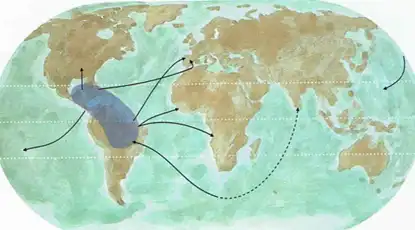
- Girassol/Sunflower “originates in South America, possibly Peru. … The Portuguese and Spanish brought the sunflower to Europe as a decorative plant, and so it remained in subsequent years. In 1716, the Englishman Bunyan obtained a patent for extracting oil from the seeds for use in the manufacture of paints and varnishes and for preserving leather. (Ferrão 2005, p.124)
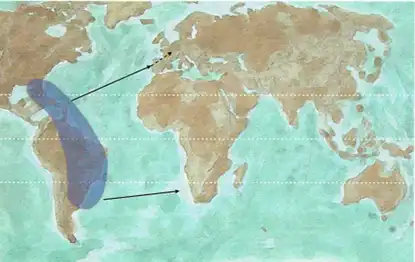
- Vanilla/baunilha “is originated in the forests of South-East Mexico. By 1677 there were large numbers of vanilla plants in Maranhão, Brazil, which leads one to believe that the species was more widespread or that it had been introduced into Brazil prior to that date.” (Ferrão 2005, p.95)
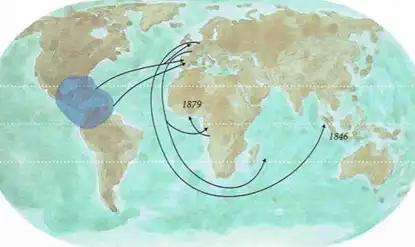
Exotic Woods:
- Pau-brasil Ibirapitanga (Tupi) (Caesalpinia echinata) First mass product after the discovery of Brazil. Started to be explored already in 1501. First regulation – Regimento da nau Bretoa – dates from 1511. 20% of sales revenue were due to the crown in form of a tax. The exploration was either contracted out to private companies/persons under this type of conditions or monopolistic licenses, and for some time represented up to 90% of Brazilian exports. Most of it was distributed farther to the north of Europe through the Portuguese “factory” in Flanders. (Braga 2007) The country, originally called Terra de Santa Cruz (Land of the Holy Cross), adopted later the designation Brazil from Brazilwood (Pau brasil in Portuguese and so-named because its reddish wood resembled the color of red-hot embers – brasa in Portuguese, and because it was recognized as an excellent source of red dye. In Tupi it is called “ibirapitanga”, which means literally ‘red wood’. The wood of the tree was used to color clothes and fabrics.), at the time its main export commodity.
- Jacarandá Pau-santo (Jacaranda copaia, Dalbergia lateriflora, Dalbergia nigra, Jacaranda mimosaefoliae, among around 50 different species, originally from the Caribean, Mexico, Central and South America).
Other:
- Syphilis was purportedly brought to Europe by Columbus sailors, giving here origin in 1495 to the first epidemic of that disease.[1]
In exchange, “horses, cattle, sheep, chickens and bees, as well as bananas, coffee, sugar, wheat, barley, rice, turnips, cabbage, cotton and lettuce were introduced to the Americas.” (Moore & Lewis 2000, p.189) Goats and pigs can be added to this inheritance list . (Wolf 1982, p.135)
[1] “Our results lend support to the Columbian theory of syphilis’s origin while suggesting that the non-sexually transmitted subspecies arose earlier in the Old World.” (Harper, Kristin N. et al. “On the Origins of the Treponematoses: A Phylogenetic Approach” , PLoS Neglected Tropical Diseases, 2008, 2(1): e148 doi:10.1371/journal.pntd.0000148

